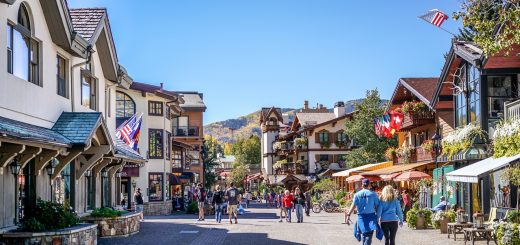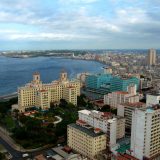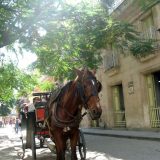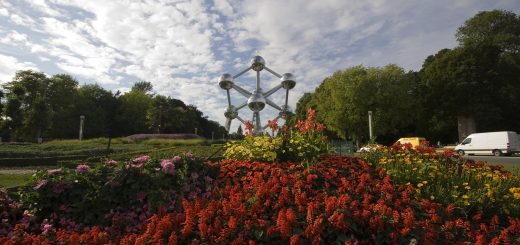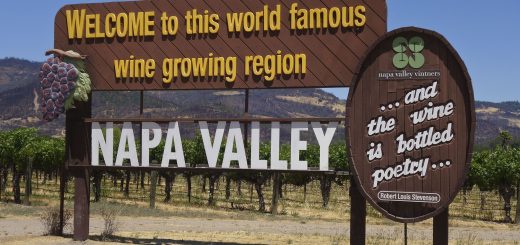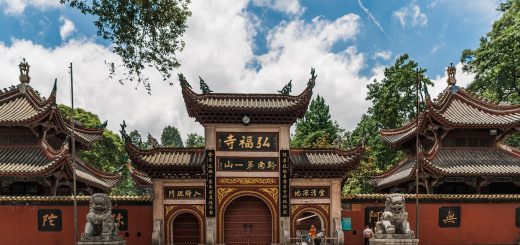New Orleans, LA
by admin · April 12, 2023
Exploring the Vibrant Culture and Cuisine of New Orleans
New Orleans, also known as the “Big Easy,” is a city known for its vibrant culture, unique cuisine, and rich history. From the iconic French Quarter to the stunning architecture and lively music scene, New Orleans offers visitors a one-of-a-kind experience. In this article, we will explore the main attractions and landmarks of the city, its rich culture, delicious food, and exciting things to do.
Attractions and Landmarks
French Quarter:
This historic neighborhood is one of the most popular destinations in New Orleans. The colorful buildings, wrought-iron balconies, and cobblestone streets are a beautiful sight to behold. Visitors can explore the many shops, restaurants, and bars, and soak up the lively atmosphere.
Jackson Square:
Located in the heart of the French Quarter, Jackson Square is a beautiful public park surrounded by historic buildings. It is a popular spot for street performers, artists, and tourists.
St. Louis Cathedral:
This iconic landmark is one of the oldest cathedrals in the United States. The stunning architecture, intricate details, and beautiful artwork make it a must-see attraction.
Garden District:
This beautiful neighborhood is home to some of the most impressive homes and gardens in the city. Visitors can take a walking tour and admire the stunning architecture and historic homes.
National WWII Museum:
This museum is a must-visit for history buffs. It features exhibits and artifacts from the Second World War, including personal stories of soldiers and civilians.
Culture
New Orleans is a city with a rich cultural heritage, shaped by the influences of its diverse inhabitants over the centuries. Here are some of the cultural experiences visitors can enjoy:
- Mardi Gras: This world-famous festival takes place every year in February or March. It’s a celebration of music, parades, costumes, and food, and it’s one of the most exciting times to be in the city.
- Jazz Fest: Held in late April or early May, Jazz Fest is a celebration of music and culture, with local and international musicians performing across several stages.
- Second Line Parades: A uniquely New Orleans tradition, second line parades are celebratory processions that often accompany funerals or weddings. Visitors can join in on the fun and dance along with the procession.
Food
New Orleans is a city known for its unique cuisine, which is influenced by French, Spanish, African, and Caribbean cultures. Here are some of the must-try dishes:
- Po’ Boy Sandwich: This traditional New Orleans sandwich is made with French bread and stuffed with roast beef, fried seafood, or other fillings.
- Jambalaya: A classic Cajun dish made with rice, meat, and vegetables, seasoned with spicy and savory flavors.
- Gumbo: A stew made with seafood or meat, vegetables, and a roux-based broth, served over rice.
- Beignets: A sweet, fried pastry that’s a popular breakfast or dessert item in New Orleans.
Things to Do
New Orleans offers visitors a range of exciting activities and experiences. Here are some of the top things to do:
- Take a Swamp Tour: Explore the unique ecosystem of the Louisiana bayous and swamps with a guided tour. Visitors can see alligators, birds, and other wildlife in their natural habitat.
- Visit a Voodoo Shop: Voodoo is a unique cultural practice that has its roots in New Orleans. Visitors can explore voodoo shops and learn about the practice’s history and traditions.
- Ride the Streetcar: The New Orleans streetcar system is a historic and affordable way to see the city’s sights. Visitors can ride the streetcar to neighborhoods like the Garden District and Uptown.
- Enjoy a Riverboat Cruise: Take a leisurely cruise down the Mississippi River on one of the city’s iconic riverboats. You’ll get to see the city from a new perspective and learn about the history of the river and its importance to New Orleans.
Best time to travel
The best time to visit New Orleans is during the fall months of September through November. During this time, the temperatures are milder, the humidity is lower, and the crowds are thinner. Additionally, the city hosts several major festivals during this time, including the New Orleans Film Festival and the Crescent City Blues & BBQ Festival.
However, if you’re looking to experience the famous Mardi Gras celebration, then plan your trip for February or early March. Keep in mind that this is peak tourist season, so prices for accommodations and activities will be higher, and crowds will be larger.
Summers in New Orleans can be hot and humid, with temperatures often reaching into the 90s, so it’s best to avoid visiting during this time if you’re sensitive to the heat. The winter months of December through February can also be chilly and rainy, but the city is still full of charm and things to do.
Conclusion:
New Orleans is a city with a unique blend of culture, history, and entertainment that you won’t find anywhere else. From the lively music scene to the delicious food and stunning architecture, there is no shortage of things to see and do in this vibrant city.
Whether you’re interested in exploring the historic landmarks and museums or indulging in the local cuisine and nightlife, New Orleans has something to offer everyone. So why not start planning your trip today and experience all that this one-of-a-kind destination has to offer?
So if you’re looking for an unforgettable adventure, put New Orleans at the top of your travel list and get ready to immerse yourself in the rich and colorful culture of this incredible city.
Top ten sights in New Orleans
French Quarter – Also known as the Vieux Carré, the French Quarter is the heart of New Orleans and the oldest neighborhood in the city. It is famous for its distinctive architecture, historic buildings, live music, street performers, and delicious food.
Jackson Square – Located in the heart of the French Quarter, Jackson Square is a historic park that is surrounded by some of the city’s most iconic buildings, including the St. Louis Cathedral, the Cabildo, and the Presbytère. It is a popular spot for street performers, artists, and tourists.
Bourbon Street – This famous street is known for its lively nightlife, bars, restaurants, and music venues. It is a must-visit destination for those looking to experience the unique culture and vibe of New Orleans.
St. Louis Cemetery No. 1 – This historic cemetery is the final resting place of many famous New Orleanians, including Voodoo Queen Marie Laveau. Visitors can take a guided tour to learn about the fascinating history of the cemetery and its inhabitants.
National WWII Museum – This world-class museum is dedicated to the history of World War II and the contributions of American soldiers. It features immersive exhibits, interactive displays, and a vast collection of artifacts.
Garden District – This historic neighborhood is known for its beautiful homes, lush gardens, and tree-lined streets. Visitors can take a walking tour to learn about the architecture and history of the area.
New Orleans Jazz National Historical Park – This park celebrates the history and legacy of jazz music in New Orleans. Visitors can enjoy live performances, exhibits, and educational programs.
Audubon Zoo – Located in Uptown New Orleans, the Audubon Zoo is home to a diverse array of animals from around the world, including elephants, lions, tigers, and bears. It also features a butterfly exhibit, a dinosaur exhibit, and a children’s zoo.
Cafe Du Monde – This iconic cafe has been serving up its famous beignets and cafe au lait since 1862. It is a must-visit destination for anyone looking to experience the flavors of New Orleans.
Preservation Hall – This historic music venue is dedicated to preserving the traditional jazz music of New Orleans. Visitors can enjoy live performances by some of the city’s most talented musicians in an intimate setting.
Top ten restaurants in New Orleans
Cafe du Monde: This historic cafe is known for its beignets, a French-style doughnut covered in powdered sugar, and chicory coffee. Prices are very affordable and the location is in the French Quarter.
Dat Dog: This casual spot serves creative hot dogs with toppings like crawfish etouffee and guacamole. Prices are moderate and the location is in the Lower Garden District.
Coop’s Place: This dive bar and restaurant serves classic New Orleans dishes like gumbo, jambalaya, and fried chicken. Prices are moderate and the location is in the French Quarter.
Commander’s Palace: This elegant restaurant serves upscale Creole cuisine like turtle soup and shrimp and grits. Prices are on the expensive side and the location is in the Garden District.
Cochon: This restaurant serves Cajun-inspired cuisine like boudin, fried alligator, and cochon (pork). Prices are moderate and the location is in the Warehouse District.
Cafe Amelie: This charming cafe is located in a courtyard and serves brunch, lunch, and dinner with a focus on local and seasonal ingredients. Prices are moderate and the location is in the French Quarter.
Emeril’s: This upscale restaurant is owned by famous chef Emeril Lagasse and serves contemporary Creole cuisine like gumbo and blackened redfish. Prices are expensive and the location is in the Warehouse District.
Brennan’s: This classic New Orleans restaurant is known for its brunch and serves dishes like bananas foster and eggs sardou. Prices are on the expensive side and the location is in the French Quarter.
Galatoire’s: This historic restaurant is known for its traditional Creole dishes like shrimp remoulade and oysters Rockefeller. Prices are on the expensive side and the location is in the French Quarter.
Cochon Butcher: This casual spot serves sandwiches, charcuterie, and small plates with a focus on Cajun and Southern ingredients. Prices are moderate and the location is in the Warehouse District.
Top ten distractions in New Orleans
Mardi Gras (February/March): This world-renowned festival features parades, live music, and colorful costumes, culminating on Fat Tuesday, the day before Ash Wednesday. Location: various locations throughout New Orleans.
Jazz and Heritage Festival (April/May): This annual festival celebrates the music and culture of New Orleans, with live performances by jazz, blues, and gospel artists, as well as local food vendors and craftspeople. Location: Fair Grounds Race Course.
French Quarter Festival (April): This annual festival celebrates the French Quarter’s unique culture, with live music, food and drink vendors, and tours of historic buildings. Location: French Quarter.
Tales of the Cocktail (July): This annual festival celebrates the art of cocktail making, with seminars, tastings, and parties hosted by renowned mixologists. Location: various locations throughout New Orleans.
Essence Festival (July): This annual festival celebrates African American culture, with live music, celebrity speakers, and a marketplace featuring local vendors. Location: Mercedes-Benz Superdome.
New Orleans Wine and Food Experience (June): This annual festival celebrates the city’s culinary scene, with tastings, wine pairings, and cooking demonstrations. Location: various locations throughout New Orleans.
Voodoo Music and Arts Experience (October): This annual festival features live music performances by popular rock, hip-hop, and electronic artists, as well as local food vendors and art installations. Location: City Park.
Southern Decadence (September): This annual LGBT festival features parades, live music, and parties throughout the French Quarter, culminating in a massive block party. Location: French Quarter.
Bayou Classic (November): This annual football game between Grambling State University and Southern University is preceded by a week-long festival of music, food, and cultural events. Location: Mercedes-Benz Superdome.
Christmas New Orleans Style (December): This annual festival celebrates the holiday season, with concerts, holiday light displays, and special events at historic locations throughout the city. Location: various locations throughout New Orleans.

